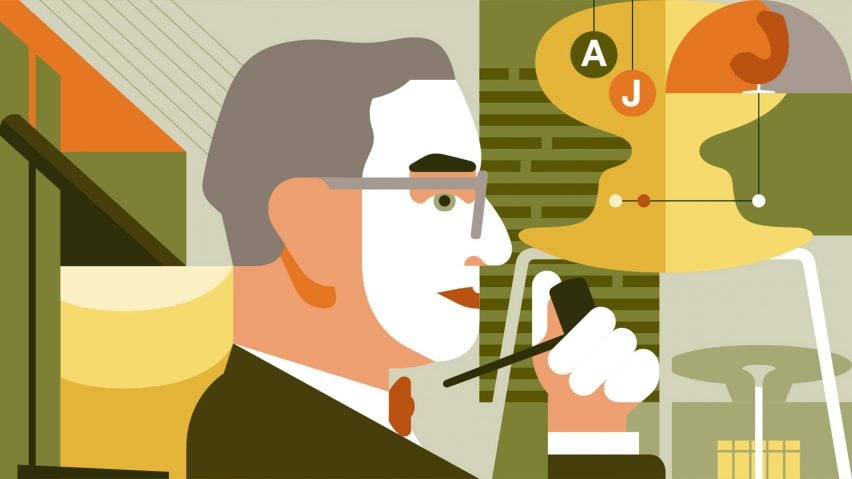
Whether "teaspoons or a national bank", Arne Jacobsen designed things down to the last detail
We continue our series on mid-century modernism with a profile on Danish architect Arne Jacobson, whose ethos of total design saw him craft buildings down to the smallest details.
Jacobsen once stated how "the act of creation is equally exhilarating whether one is working on a teaspoon or a national bank," and his broad output is a testament to an all-encompassing vision of the impact design could have.
While Jacobsen is probably best known today for his curvaceous chair designs – among them the organically shaped and aptly named Egg, Swan, Pot and Drop – he always considered these an extension of architectural spaces rather than objects in their own right.
"[Jacobsen] didn't call himself a designer; he didn't even like the word,'' architecture professor Scott Poole said in a New York Times article. "He conceived the furniture as part of a whole."
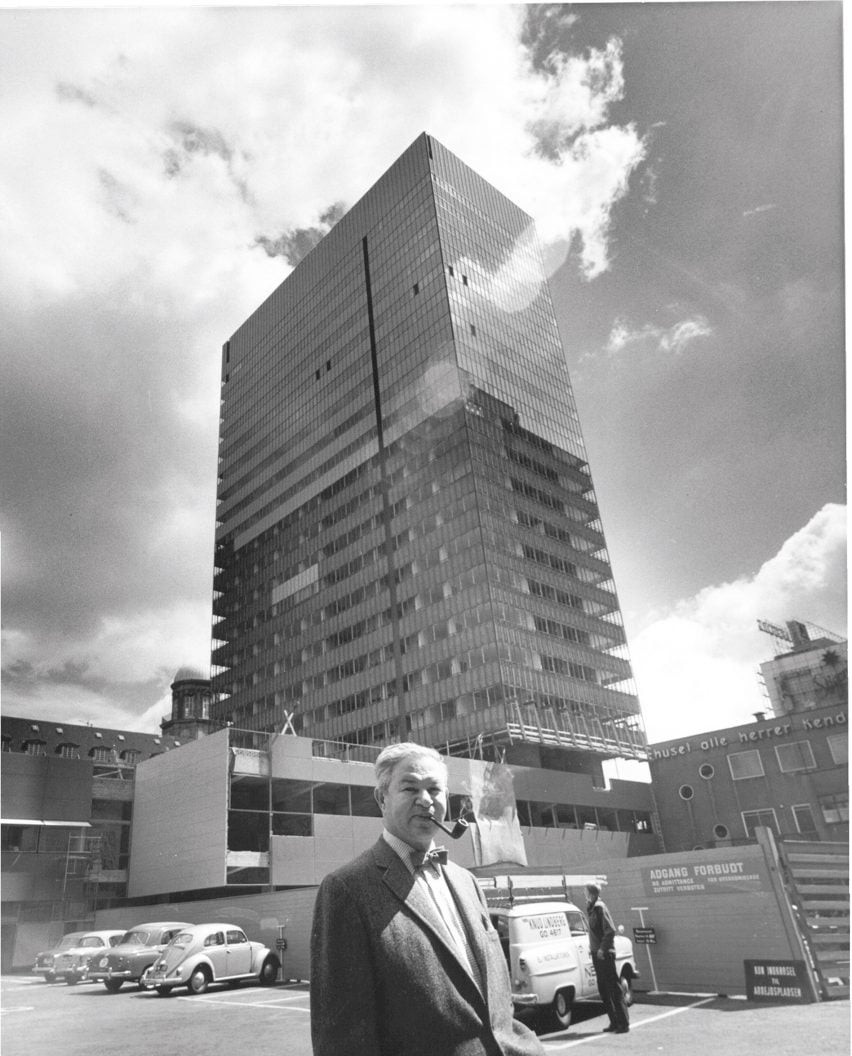
Indeed, many of the designs for which Jacobsen is best known today, be they chairs, textiles, cutlery or lighting, were created for one of his most high-profile architectural projects, the SAS Royal Hotel in Copenhagen.
Becoming the Danish capital's first skyscraper upon its completion in 1960, the starkly modern exterior of this hotel – which many critics feared would ruin the city's traditional skyline – concealed intimate, green-toned interiors that were carefully crafted to exude a feeling of luxury and elegance.
Born in Copenhagen in 1902 to Jewish parents, Jacobsen originally wanted to be a painter but was encouraged by his mother to pursue architecture instead. He enrolled at the School of Architecture at the Royal Danish Academy of Fine Arts in 1924.
Teaching at the school during this period were architects Kay Fisker and Kaj Gottlob, important figures in the reigning style of Danish functionalism. This style, of which Jacobsen would become a leading proponent, took the more revolutionary International Style of modernism and softened it with traditional materials and motifs.
First furniture design shown in Paris in 1925
While still a student, Jacobsen presented his first furniture design at the 1925 Exposition International des Arts Decoratifs in Paris, using handmade rattan to achieve an early example of the curved seat shapes for which he would become so strongly associated. It was awarded a silver medal and later produced as the Paris Lounge Chair.
Jacobsen, however, saw himself first and foremost as an architect. At the Paris expo he was taken, like many of his peers, with the starkly functionalist L'Esprit Nouveau pavilion, created by architect Le Corbusier in protest of the fair's promotion of "frivolous" art deco.
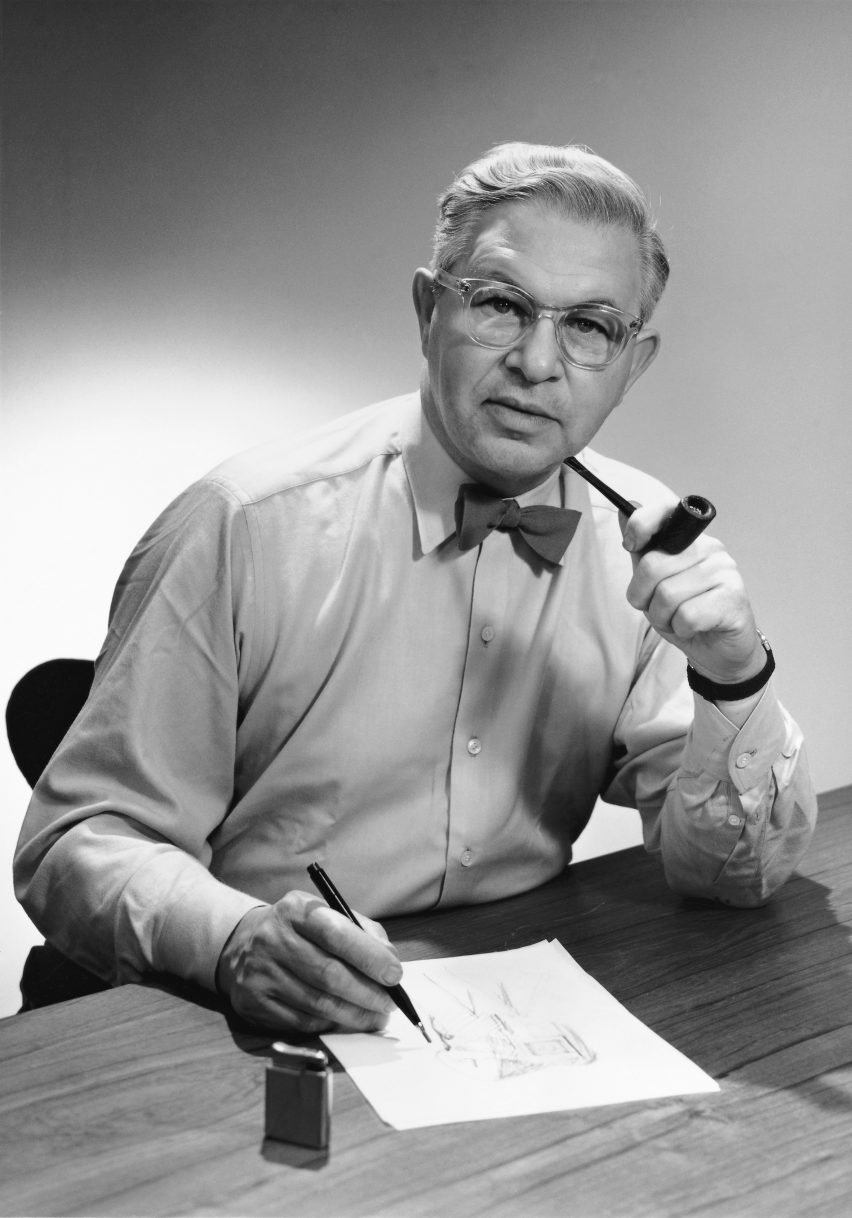
Prior to graduating, Jacobsen would visit Germany to see works by architects Walter Gropius and Mies van der Rohe. All these influences can clearly be read in what became Jacobsen's breakthrough architectural project – an exhibition house called The House of the Future, which he designed in 1929 in collaboration with architect Flemming Lassen.
Presented at the Forum exhibition in Copenhagen, this spiral-shaped white-rendered home was an optimistic vision of modernity – with terraces for sun lounging wrapped by ocean liner-style balconies, and even space for a gyroplane to land on its roof.
The exposure from this project enabled Jacobsen to open his own office in 1929, and his early works such as the Bella Vista Estate in 1934 continued to explore a more International Style form of modernism with which he was preoccupied at the time, leading some to refer to him as "Denmark's Le Corbusier."
Already in these early projects, Jacobsen was interested in approaching projects as total, all-encompassing environments. This included furniture, beginning in the 1930s what would become a long-term collaboration with Danish furniture designer Fritz Hansen.
In 1937, Jacobsen won a competition with architect Erik Møller to design Aarhus City Hall. Originally presenting a functionalist box, after public calls for it to be more traditional the duo crowned the building with a clock tower and clad it in marble.
Inside, Jacobsen and Møller contrasted the orthogonal exterior with a soft interior in beech, mahogany and brass, even creating a custom typography for its signage.
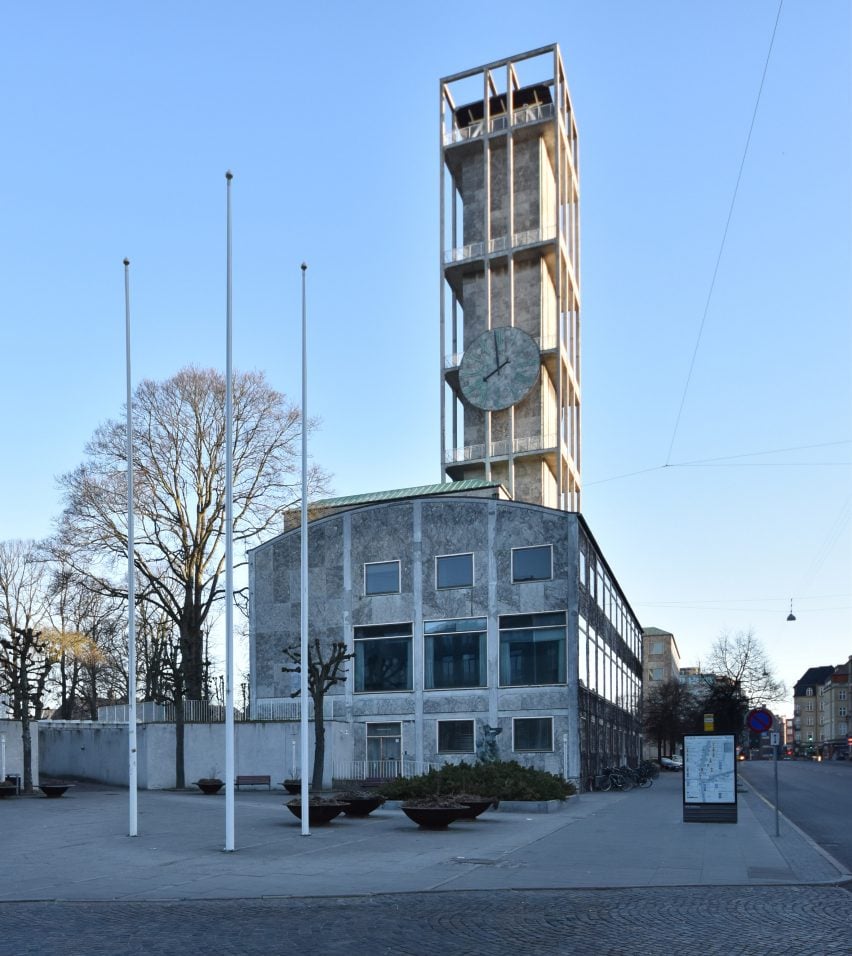
When the Nazis occupied Denmark during the second world war, Jacobsen, like many of Jewish descent in the country, fled to Sweden.
Having to abandon his office, along with material shortages, led to relatively few architectural commissions in this period, with Jacobsen instead working on fabric and wallpaper designs with his wife Jonna Jacobsen.
Returning to Denmark once the war ended, Jacobsen designed both the Alléhusense Residential buildings in Copenhagen and the Søholm Row Houses, one of which would become Jacobsen's home for the rest of his life.
Both of these residential projects, as well as the Mukegaard School building in Gentofte, swapped the white-rendered finish of his pre-war work for traditional brick construction, demonstrating a renewed interest in blending modernity and tradition that would define the second half of his career.
His work maintained a level of diversity, however, with the simple and precise exterior of the 1956 Rødovre Town Hall being much more outwardly modern in its use of glass and steel.
Large-scale projects provided the impetus for new furniture ideas
Despite early recognition for his chair design in Paris and collaborations with Danish furniture maker Fritz Haller, it was not until the 1950s that Jacobsen would return to industrial furniture design in earnest.
While working on an extension to the Novo pharmaceutical factory, a director visited Jacobsen's studio and was particularly taken by a chair Jacobsen had developed that Fritz Hansen had initially been reluctant to produce – the Ant.
This three-legged stacking chair was the first Danish chair made with a single plywood shell, originally prototyped by Jacobsen in clay and plaster. He had achieved a single, sharp curve by reducing the width of the chair in the centre, giving it its distinctive shape resembling the body of an ant.
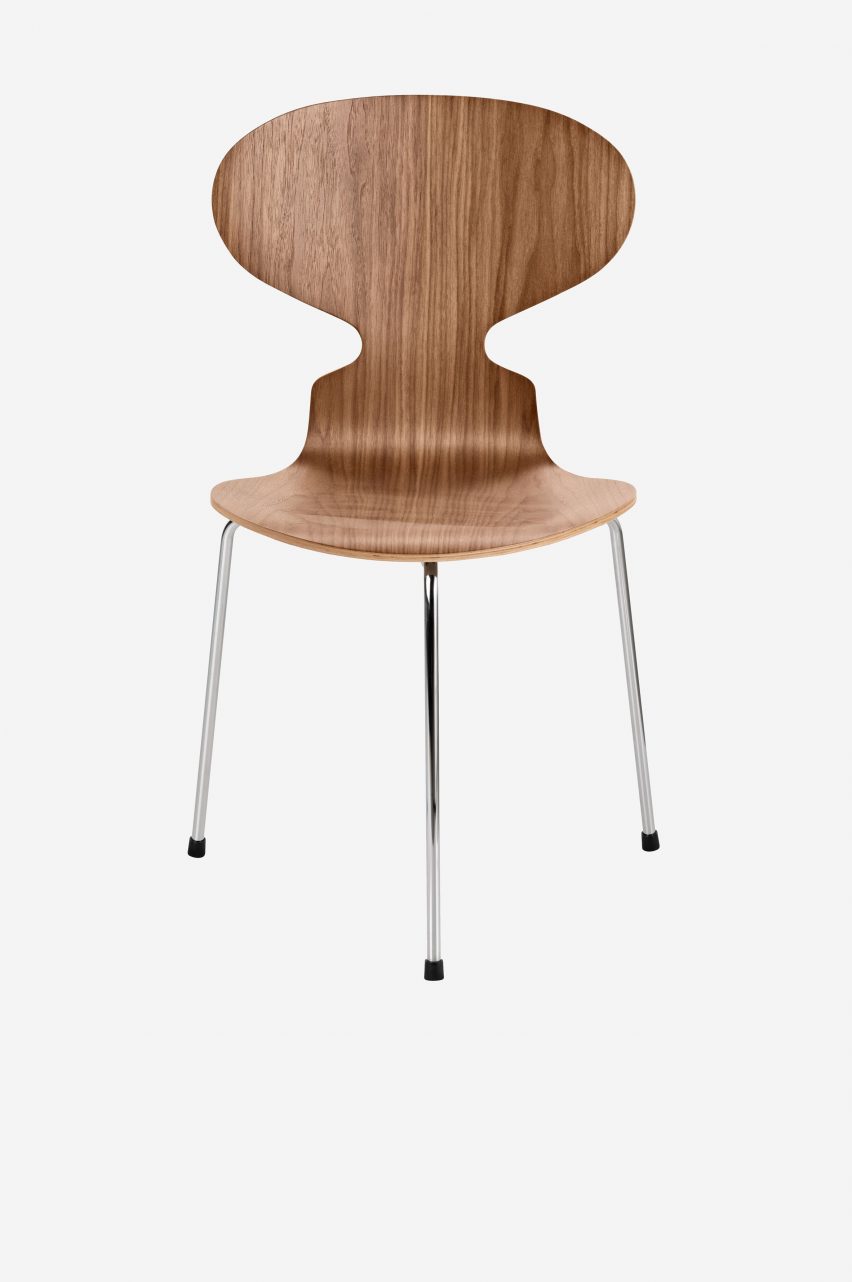
The large orders received for the Novo factory convinced Fritz Hansen to take the chair to the mass market, and Jacobsen would later enhance the ideas explored in the Ant chair to create the Series 7 in 1955 – a four-legged chair with a simpler, curved form.
"I based my work on a need: what chairs are needed?" Jacobsen said of its design. ‘"I found that people needed a new type of chair for the small kitchen-dinettes found in most new buildings today, a little, light and inexpensive chair."
Many of Jacobsen's later projects would follow the same pattern of being both a showcase for previous furniture designs and a testing ground for new ones.
SAS Royal Hotel designed as "a total work of art"
The most notable of these was the SAS Royal Hotel in 1960, where virtually every room received its own specific furniture piece.
"Jacobsen successfully leveraged the power of the architect as a purveyor of more than just architecture, reconceptualising the 19th-century idea of the gesamtkunstwerk, a building as a total work of art," architecture writer Catherine Slessor wrote in magazine The Architectural Review.
For the lobby and reception areas, Jacobsen created the Egg chair with its large, enveloping form. Alongside was its slightly more toned-down cousin, the Swan chair and the Swan Sofa, with forms reminiscent of the Ant but fully upholstered and with a seat that sweeps upwards to become arms.
For the restaurant, he designed the Giraffe, a bucket seat with a narrow, high back, all finished in green upholstery to match the interior palette. In the conservatory were the bowl-like Pot chairs, and in the bedrooms the teardrop-shaped Drop chair.
Both Jacobsen's approach to total design and his interest in blending modernity with tradition were put to the test when he was appointed to design St. Catherine's College at Oxford University, completed in 1964.
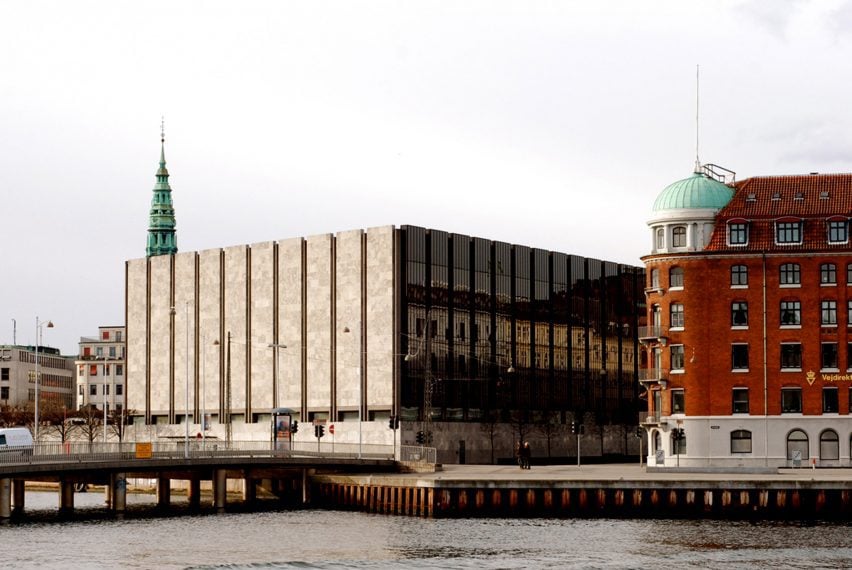
In such a traditional British setting there were anxieties over the hiring of a European modernist, but Jacobsen's approach was to reinterpret all of the traditional college motifs with a modern sensibility.
Otherwise, Jacobsen said, "one might end up with, in my opinion, the very worst outcome, which is a pastiche, a sad copy of something old."
A typical quadrangle layout was used, with the central courtyard surrounded by glass and concrete, reinterpreting a colonnade with large mullions.
Inside, the high-back chairs Jacobsen created for the dining hall, nicknamed the Professor chair, were based on a single, curved plywood piece moulded based on the human back, rising to a throne-like height to mark out the authority of the fellows.
The prolific creation of new design ideas alongside large-scale architectural projects would continue until Jacobsen's death in 1971, while still working on his last major work, the fortress-like National Bank of Denmark.
Making use of the furniture he developed for the SAS Royal Hotel, the bank also saw the development of the Lily chair, the Banker's wall clock and the VOLA series of bathroom fittings.
While many of Jacobsen's designs were immediately put into production for the market by Fritz Hansen, it is only much later that several have been re-launched, some only over the past few years.
True to his total design ethos, Jacobsen's legacy is one that continues to be felt across all scales of design.
The main illustration is by Vesa S.
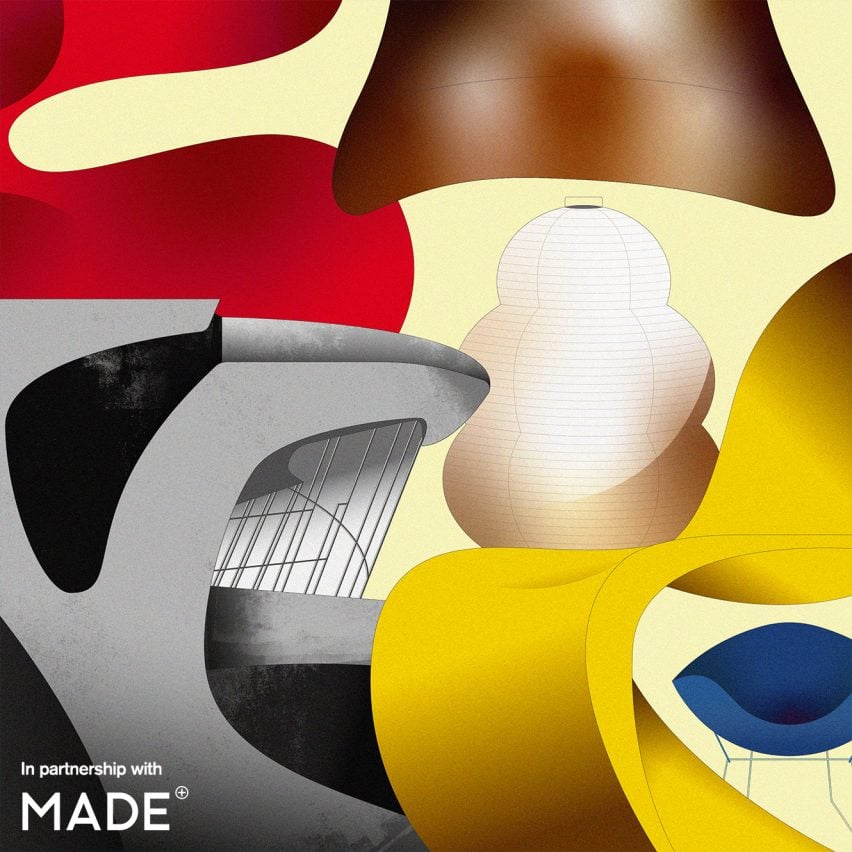
Mid-century modern
This article is part of Dezeen's mid-century modern design series, which looks at the enduring presence of mid-century modern design, profiles its most iconic architects and designers, and explores how the style is developing in the 21st century.
This series was created in partnership with Made – a UK furniture retailer that aims to bring aspirational design at affordable prices, with a goal to make every home as original as the people inside it. Elevate the everyday with collections that are made to last, available to shop now at made.com.